Awhile back I mentioned I had inherited some old cast iron when a family member past. The first time I saw these pans they were a thing of beauty. The sides had some lumpy char, but the bottom of these pans were like a mirror. They are the pans she had used ner everyday since she got them as a wedding gift, in 1943. To say the least they were very seasoned. In the last year of her life she became to ill to care for herself. So my mother moved into her house with her, and cared for her. Despite my calls of warning, she insisted on washing the pans with soap. After my grandmother past, I got the pans. However after a year of being washed with soap and water the 69 years of seasoning was well... shot.
I decided to restore the pans. To do this I needed to strip off the old seasoning, and start again from scratch. I also did not want to damage the pan. So I choose to use electrolysis to clean them.
The pans starting condition.
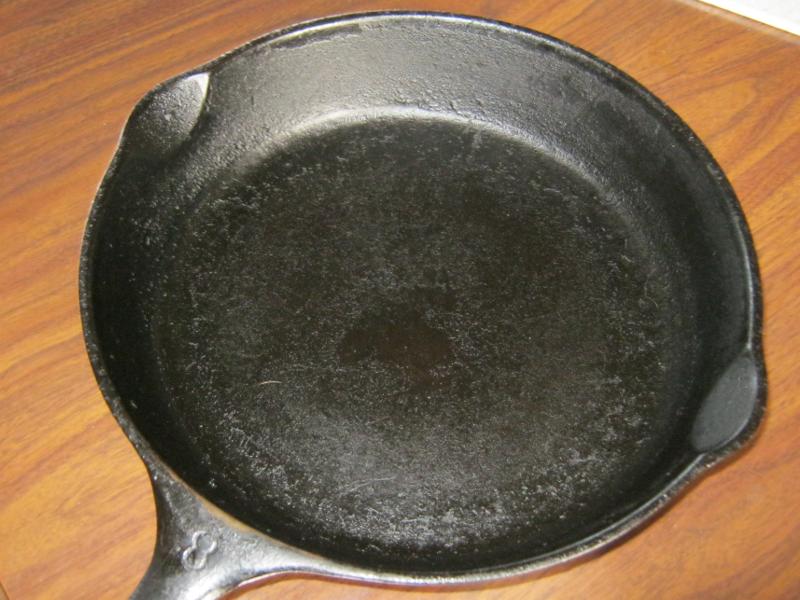
It looks scratched up, but it's hard to see the real damage so some close ups.
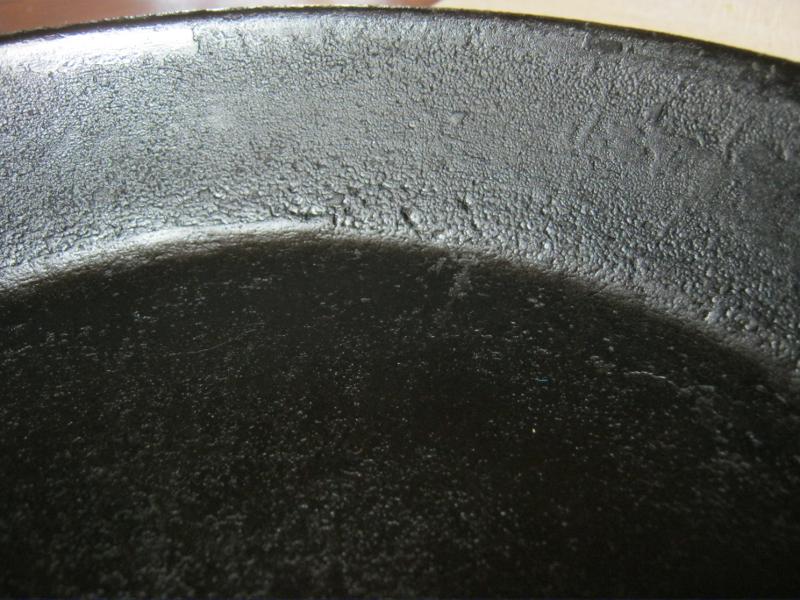
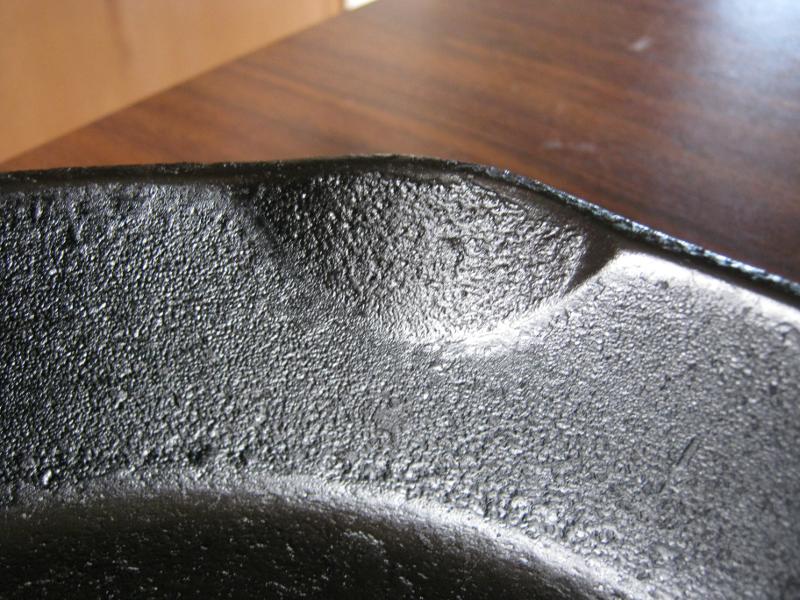
This is what I call "Soap erosion"
A better look at it here.
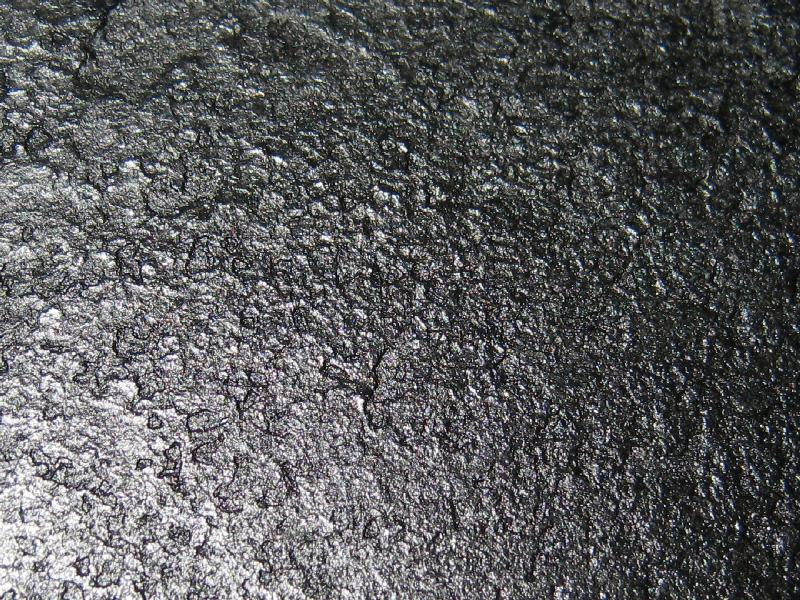
It flakes and pits the previously mirror like seasoning.
The sides of the pan also had some "char lumps" on the sides. This was just from long term use, and did not affect the usablity of the pans what so ever.
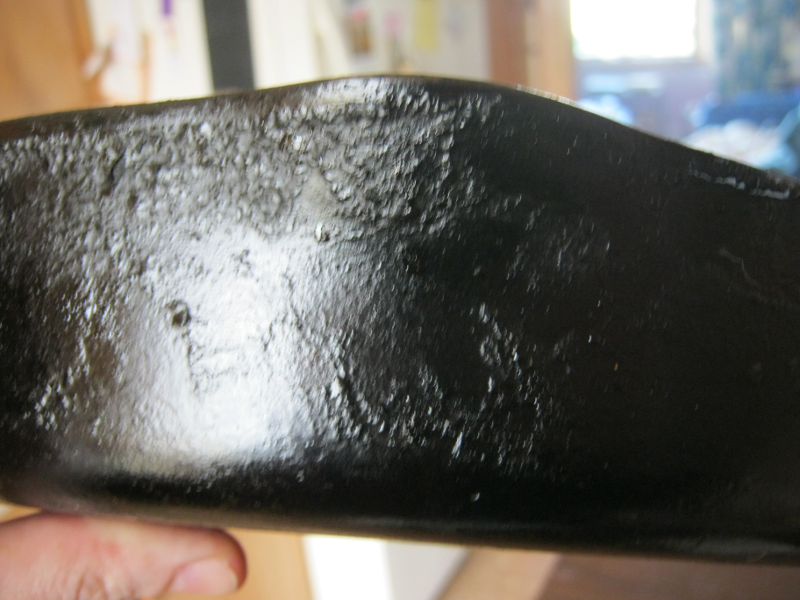
Some of the old "shine" the bottom of the pan used to have can still been seen here as well.
Ok on to the electrolysis bit. To do this I bought a plastic bin from walmart, and for my current I used a power supply from a defunct laptop(19v 4amps). I used Sodium Carbonate(NOT Bicarbonate) as my electrolyte. The amperage was pretty low, and the buildup on the pan was pretty thick. So the whole process took about a week.
In the tank.
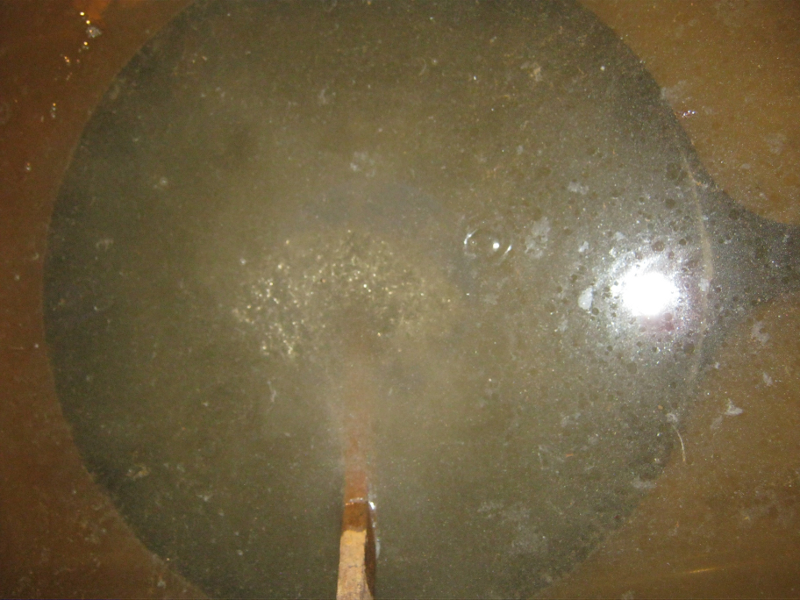
And the after shots.
Clean bare iron.
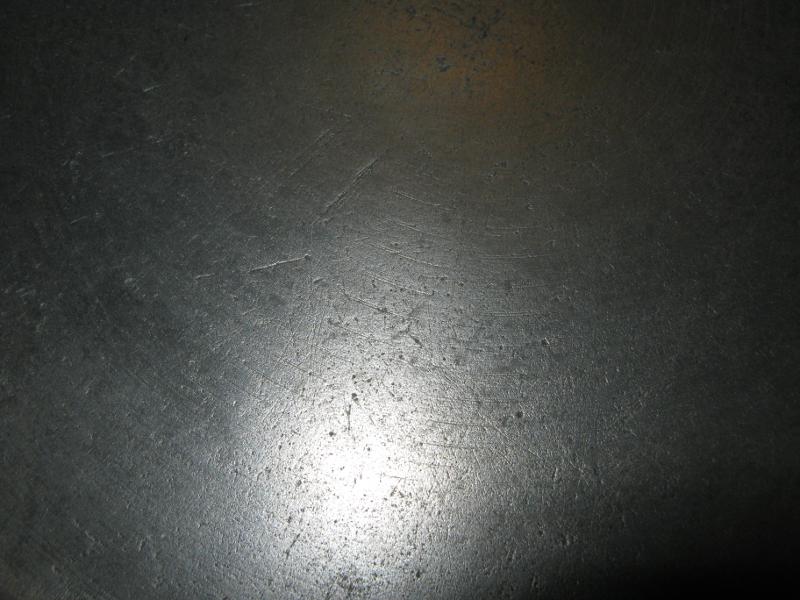
Seasoned up.
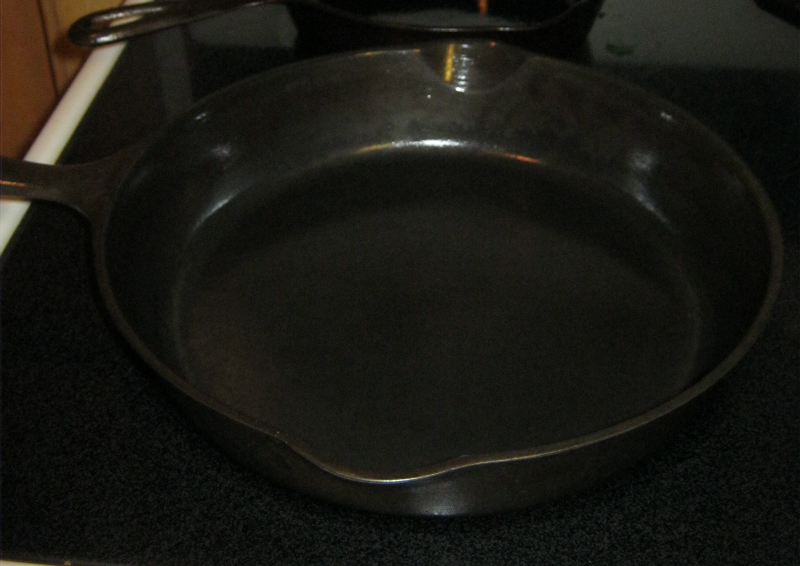
Been used a few times.
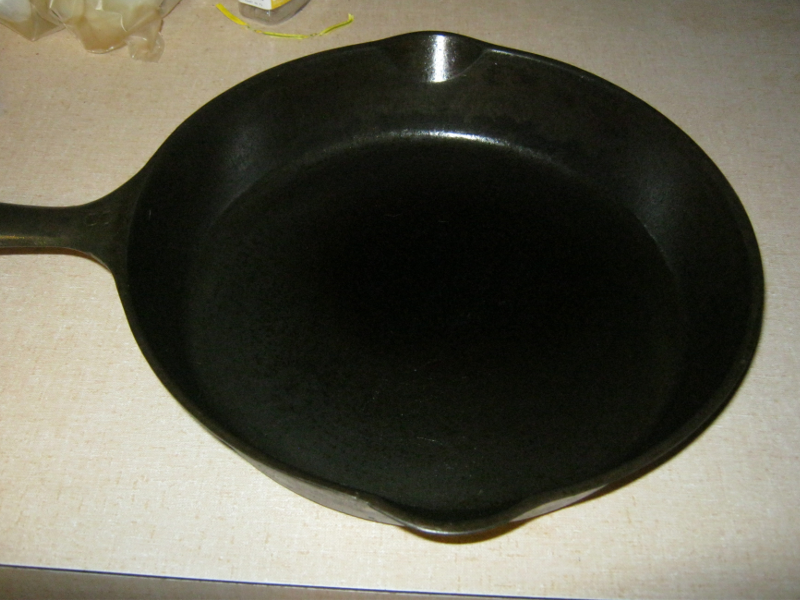
Remember, no matter how much char, or rust is on a cast iron pan. It can be cleaned.
=)
I decided to restore the pans. To do this I needed to strip off the old seasoning, and start again from scratch. I also did not want to damage the pan. So I choose to use electrolysis to clean them.
The pans starting condition.

It looks scratched up, but it's hard to see the real damage so some close ups.


This is what I call "Soap erosion"
A better look at it here.

It flakes and pits the previously mirror like seasoning.
The sides of the pan also had some "char lumps" on the sides. This was just from long term use, and did not affect the usablity of the pans what so ever.

Some of the old "shine" the bottom of the pan used to have can still been seen here as well.
Ok on to the electrolysis bit. To do this I bought a plastic bin from walmart, and for my current I used a power supply from a defunct laptop(19v 4amps). I used Sodium Carbonate(NOT Bicarbonate) as my electrolyte. The amperage was pretty low, and the buildup on the pan was pretty thick. So the whole process took about a week.
In the tank.

And the after shots.
Clean bare iron.

Seasoned up.

Been used a few times.

Remember, no matter how much char, or rust is on a cast iron pan. It can be cleaned.
=)

 .
.